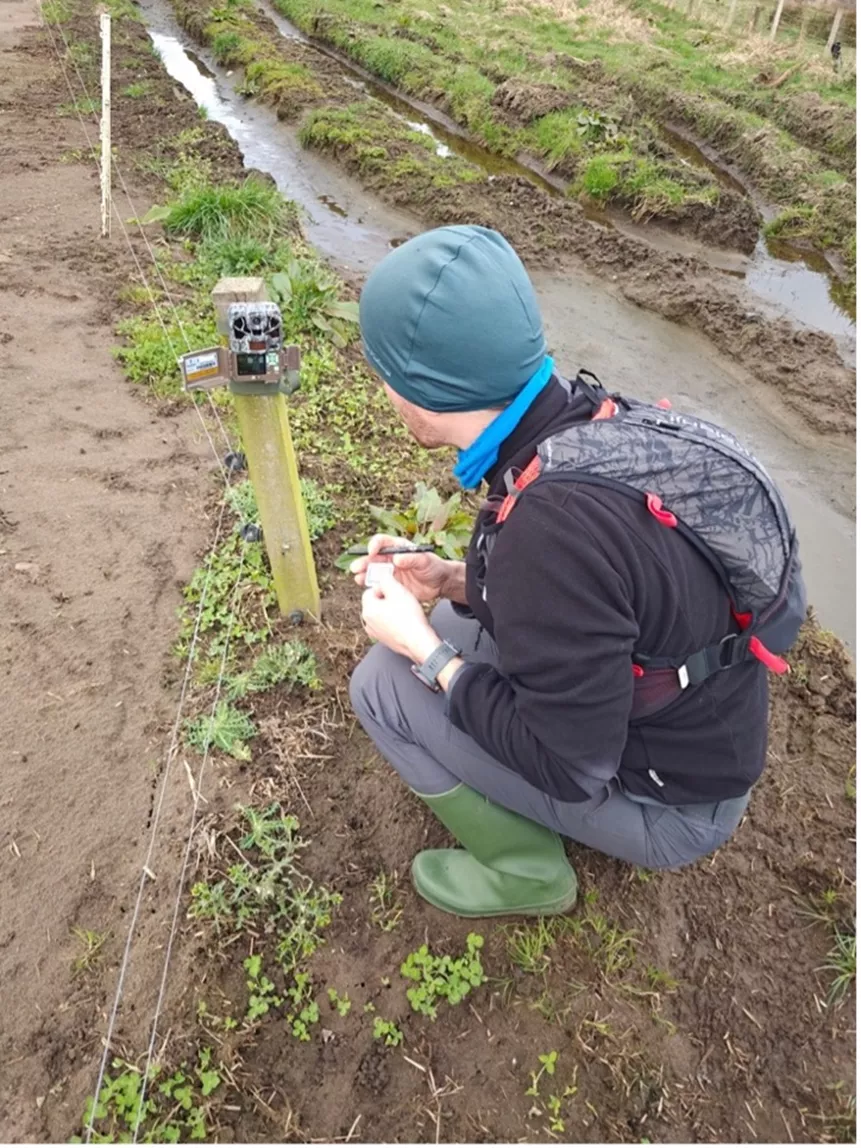Camera trapping can help determine if feral pigs and other wild species represent a direct risk for infectious disease transmission to domestic livestock.
Scientists from the Scottish Government’s Centre of Expertise on Animal Disease Outbreaks (EPIC) are using camera traps to monitor feral pig activity in the North-East of Scotland, amid growing concerns about the potential spread of diseases such as African swine fever (ASF).
ASF is a fatal disease that can cause up to a 100 percent mortality in domestic pig herds. The virus can be transmitted internationally due to human activity, including imports of contaminated pig meat, and locally between feral and domestic pigs. First detected in the European Union in 2014, it has since spread to major pig producing countries including Poland, Germany and Italy.
While ASF is not present in the UK right now, if it did arrive in the UK, the recent expansion of feral pig populations across the UK is a cause for major concern due to potential for disease spread. EPIC and the Scottish Government are taking proactive steps to monitor potential disease spread and risk around farms.
Camera traps placed to detect feral pig activity
EPIC scientists, including Disease Ecologist and Epidemiologist Gianluigi Rossi from The Roslin Institute, have deployed a total of 40 camera traps around three extensive pig breeder farms in September 2024 to monitor potential feral pig and wildlife activity near domestic pigs. Cameras were placed facing outside of livestock fences and photos were collected each night between 6pm and 6am. At each activation, cameras took a sequence of four shots and were categorised according to what triggered the camera’s activation.
“There is little data available on feral pigs in Scotland, especially in the North-East where extensive outdoor pig farms are located. We hope that our camera trap project can shed a light on whether feral pigs and other wild species represent a direct risk for infectious disease transmission to these farms,” Gianluigi explained.
Six-month trapping update
While no feral pigs were spotted six months into the year-long camera trapping pilot project, the cameras have captured many other animals around the farms from roe deer to European badgers and the common shelduck, which could be carriers of diseases such as foot-and-mouth disease (FMD), bovine tuberculosis (bTB), and avian influenza. The data collected highlights the potentially significant role of wildlife to livestock disease transmission if these notifiable diseases were to occur in Scotland.
Supporting new import regulations to manage transmission of livestock diseases
On 23 August 2025, to reduce the chance of ASF, FMD or other notifiable diseases being introduced, the Scottish Government implemented a new provision formally regulating personal imports of animal products into Scotland. This is intended to stop individuals from returning from their travels with products which could carry animal diseases such as ASF.
In advisory meetings with Ministers and pig keepers during the summer months of 2025, Gianluigi referenced analyses of ASF virus genome from different continents to show how human-mediated transmission largely contributed to the current outbreaks of this pathogen.
Certain animal products, such as cured uncooked meat, can carry ASF for several months, even once packaged. Livestock or other wildlife, such as feral pigs, could come into contact with contaminated materials that are placed in bins or left in public spaces, and spread onwards to other feral and domestic pigs. An animation created by EPIC and Scotland’s Plant Health Centre further highlights the potential risks of transmission of livestock diseases due to human activity.
The future of detecting wildlife: AI and automated data collection
Focused on improvements to monitoring to protect domestic pigs from disease, Gianluigi explained, “As for the future of camera trap work, we aim to adopt artificial intelligence models to automatically sort and classify the images of wildlife. We would also use these tools to produce more in-depth statistics on the animal visits to farms and provide farm managers with useful information to improve biosecurity.”
As monitoring continues and the data is collected, EPIC will continue to report on findings from this work.
Press requests and research enquiries can be made by emailing epic.scotland@ed.ac.uk.

Gianluigi Rossi visits a farm to check cameras set up to detect wildlife.

